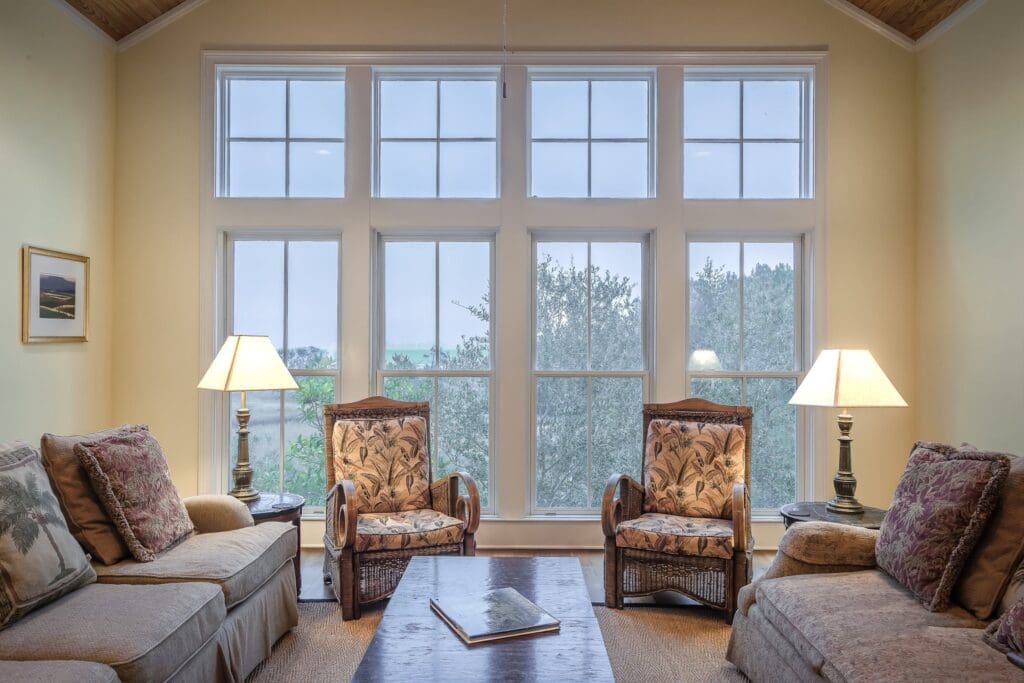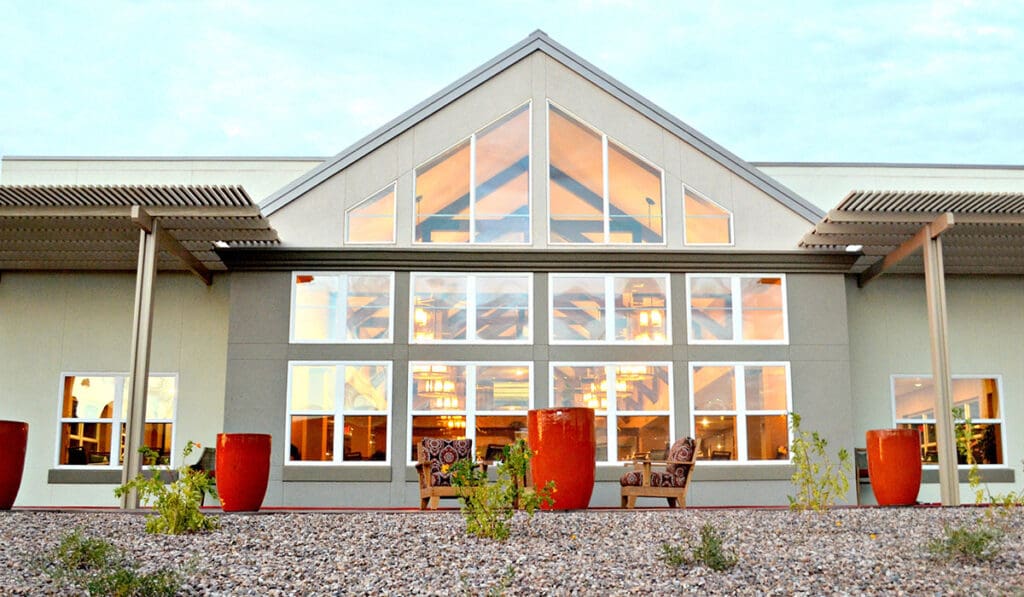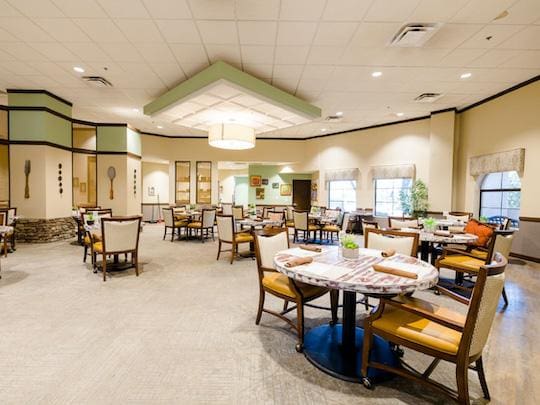As we age, the need for assistance and care becomes increasingly important. Assisted living facilities have long been a popular choice for individuals who require some level of support with daily activities but still want to maintain their independence. However, what happens when assisted living is no longer enough?
In this blog post, we will delve into the limitations of assisted living and explore the signs that indicate when it may no longer be sufficient. We will also discuss the effects of insufficient care on health and wellbeing, and the importance of communicating with healthcare providers.
But don’t worry – this blog post isn’t just about the challenges. We will also explore alternative care options that can provide a higher level of support, such as nursing homes, in-home care services, and hospice and palliative care.
Transitioning from assisted living to a higher level of care can be a daunting process, which is why we will guide you through the steps involved. We will discuss how to assess the need for a transition, how to choose the right care facility, and how to overcome the emotional challenges that may arise during this time.
Additionally, we will touch upon the financial considerations that come with transitioning to higher levels of care, as well as the legal and ethical considerations that need to be taken into account. Understanding patient rights, navigating legal issues, and making end-of-life decisions are all important aspects to consider when assisted living is no longer enough.
So, if you or a loved one are currently in assisted living or considering it as an option, join us as we explore what happens when assisted living is not enough and discover the alternative care options available to ensure the best quality of life for yourself or your loved ones.
Understanding the Limitations of Assisted Living
Assisted living facilities offer a range of services and support for individuals who require assistance with daily activities but still desire a level of independence. However, it is important to recognize that assisted living has its limitations. Understanding these limitations can help individuals and their families make informed decisions about their care needs.
One of the primary limitations of assisted living is the level of medical care provided. While assisted living facilities typically have staff who can assist with medication management and basic medical needs, they are not equipped to provide the same level of medical care as a nursing home or hospital. This means that individuals with complex medical conditions or those who require frequent medical attention may find that assisted living falls short in meeting their needs.
Another limitation is the availability of on-site healthcare professionals. Assisted living facilities may have nurses or caregivers available during certain hours, but they may not have around-the-clock medical staff. This can be a concern for individuals who require constant monitoring or assistance, especially during nighttime hours when emergencies may arise.
Additionally, assisted living facilities may have limitations when it comes to specialized care services. For example, individuals with advanced dementia or Alzheimer’s disease may require specialized memory care, which may not be available in all assisted living facilities. Similarly, those with mobility limitations or specific dietary needs may find that their requirements cannot be fully met within the confines of assisted living.
Lastly, assisted living facilities have limitations in terms of social engagement and activities. While many facilities offer a range of recreational programs and social opportunities, the extent and variety of these activities may vary. Some individuals may desire a more vibrant social environment or a greater variety of activities, which may not be fully provided in assisted living settings.
Understanding the limitations of assisted living is crucial in order to make informed decisions about care options. It is important to assess individual needs, medical requirements, and desired level of social engagement when considering the appropriateness of assisted living as a long-term care solution. Recognizing when assisted living is not enough is the first step in exploring alternative care options that can better meet the evolving needs of individuals seeking comprehensive care and support.
Recognizing When Assisted Living is No Longer Sufficient
Assisted living can provide a valuable level of support for individuals, but there may come a time when it is no longer sufficient to meet their needs. It is important to recognize the signs that indicate when assisted living is no longer providing the necessary care and support.
One of the key signs that assisted living may be insufficient is a decline in physical health. If an individual’s health condition worsens to the point where they require more frequent medical attention or specialized care, it may be an indication that assisted living is no longer able to meet their needs. This could include conditions such as advanced stages of chronic illnesses, increased mobility limitations, or the need for ongoing medical treatments.
Another sign to watch for is a decline in cognitive abilities. Individuals with progressive conditions like Alzheimer’s or dementia may reach a stage where they require specialized memory care that is beyond what is typically offered in assisted living facilities. Memory issues that significantly impact daily functioning and safety can be a clear indication that a higher level of care is necessary.
Changes in behavior and emotional well-being can also signal that assisted living is no longer sufficient. If an individual starts to exhibit increased agitation, aggression, or confusion, it may indicate that their care needs have escalated beyond what can be effectively managed in an assisted living environment. Additionally, feelings of isolation or boredom due to limited social engagement and activities can negatively impact mental health and quality of life.
Another factor to consider is the availability and accessibility of necessary services. If an individual requires specialized therapies, frequent medical appointments, or specific dietary considerations that are not readily available in the assisted living facility, it may be an indication that a higher level of care is needed to adequately meet their needs.
Lastly, family caregivers may also recognize signs that assisted living is no longer sufficient. Caregiver burnout, increased stress levels, or a sense that they are unable to provide the level of care and support required for their loved one can be a strong indication that it is time to explore alternative care options.
Recognizing when assisted living is no longer sufficient is crucial in order to ensure the well-being and quality of life of individuals in need of care. By being aware of these signs, individuals and their families can take the necessary steps to explore alternative care options that can better meet their evolving needs and provide the appropriate level of support and assistance.

Exploring Alternative Care Options
When assisted living is no longer sufficient to meet an individual’s care needs, it becomes crucial to explore alternative care options that can provide a higher level of support. Here are some alternative care options to consider:
Nursing Homes and Long-Term Care Facilities
Nursing homes, also known as skilled nursing facilities, offer 24-hour medical care and supervision for individuals with complex medical needs. These facilities have a team of skilled healthcare professionals, including nurses and doctors, who can provide specialized care and support. Nursing homes are equipped to handle a wide range of medical conditions and can offer services such as physical therapy, rehabilitation, and round-the-clock monitoring. They also provide assistance with activities of daily living, medication management, and nutritious meals. When considering a nursing home, it is important to research the reputation, quality of care, and available services of different facilities to ensure the best fit for individual needs.
In-Home Care Services
For individuals who prefer to remain in the comfort of their own homes, in-home care services can be a suitable alternative to assisted living. In-home care services provide assistance with daily activities, personal care, and medication management. They can also offer companionship and emotional support. In-home caregivers can be hired through agencies that screen and train their staff, ensuring that they have the necessary skills and qualifications. These caregivers can provide varying levels of care, from a few hours a day to 24-hour live-in care, depending on individual needs. In-home care allows individuals to maintain their independence while receiving the necessary support in their own familiar surroundings.
Hospice and Palliative Care
Hospice and palliative care are specialized forms of care focused on providing comfort and support for individuals with life-limiting illnesses. Hospice care is typically provided in a facility or at home and focuses on managing pain, providing emotional and spiritual support, and enhancing the quality of life during the final stages of illness. Palliative care, on the other hand, can be provided alongside curative treatment and is aimed at relieving symptoms and improving overall well-being. Hospice and palliative care services often include a multidisciplinary team of healthcare professionals, including doctors, nurses, social workers, and chaplains, who work together to address the physical, emotional, and spiritual needs of individuals and their families.
Exploring these alternative care options can help ensure that individuals receive the appropriate level of care and support when assisted living is no longer sufficient. It is important to carefully evaluate each option, considering the individual’s medical needs, personal preferences, and financial considerations. Consulting with healthcare professionals, touring facilities, and speaking with other families who have utilized these services can provide valuable insights when making a decision.

The Transition Process: Moving from Assisted Living to Higher Levels of Care
Moving from assisted living to a higher level of care can be a significant transition for both the individual and their family. This section will guide you through the process of transitioning and provide helpful information to make the journey smoother.
Assessing the Need for a Transition
The first step in the transition process is assessing the need for a higher level of care. This involves evaluating the individual’s current care needs, considering any recent changes in health or abilities, and consulting with healthcare professionals. It is important to thoroughly assess the level of care required to ensure that the transition meets the individual’s needs and provides the necessary support.
How to Choose the Right Care Facility
Once the decision to transition has been made, the next step is selecting the right care facility. This requires thorough research and consideration of factors such as location, services offered, staff qualifications, safety measures, and the facility’s reputation. Touring different facilities, asking questions, and speaking with current residents and their families can provide valuable insights in making an informed decision.
Overcoming Emotional Challenges
Moving from assisted living to a higher level of care can bring about a range of emotions for both the individual and their loved ones. It is important to acknowledge and address these emotions, which may include feelings of loss, anxiety, or guilt. Open communication, support from healthcare professionals, and involvement in the decision-making process can help individuals and families navigate these emotional challenges.
Financial Considerations
Transitioning to a higher level of care often comes with financial implications. It is important to carefully review the costs associated with the new care facility, including monthly fees, additional services, and potential insurance coverage. Exploring financial assistance options, such as long-term care insurance or government programs, can help mitigate the financial burden and ensure the affordability of the new care arrangement.
Navigating the transition process requires careful planning, open communication, and a collaborative approach between the individual, their family, and healthcare professionals. By assessing the need for a transition, selecting the right care facility, addressing emotional challenges, and considering financial considerations, the transition from assisted living to higher levels of care can be a smoother and more successful experience, ensuring the individual’s well-being and quality of life.

Legal and Ethical Considerations
When assisted living is no longer sufficient, navigating the legal and ethical aspects of care becomes crucial. This section will explore the legal rights and considerations that individuals and their families should be aware of when transitioning to higher levels of care.
Understanding Patient Rights
It is essential to understand the rights that individuals have when receiving care in a higher level of care facility. These rights include the right to be treated with respect and dignity, the right to participate in care decisions, the right to privacy and confidentiality, and the right to have access to their medical records. Familiarizing oneself with these rights can help ensure that the individual’s autonomy and well-being are respected throughout the care process.
Navigating Legal Issues
Transitioning to a higher level of care may involve legal considerations. This can include reviewing and updating legal documents such as advance directives, durable power of attorney, and healthcare proxy. These documents help outline the individual’s wishes regarding medical treatment, decision-making, and end-of-life care. It is important to consult with an attorney specializing in elder law to ensure that all necessary legal documents are in place and reflect the individual’s current preferences.
Ethical Considerations and End-of-Life Decisions
Ethical considerations often arise when transitioning to higher levels of care, particularly when it comes to end-of-life decisions. It is crucial to have open and honest conversations with healthcare providers and family members about the individual’s wishes for medical treatments, resuscitation, and life-sustaining interventions. Engaging in advance care planning and discussing these topics in advance can help ensure that the individual’s values and preferences are respected and followed.
Additionally, ethical considerations may also include issues related to quality of care, choice of care facility, and access to appropriate medical treatments. Advocating for the individual’s rights and ensuring that their care aligns with their values and beliefs is an important aspect of the transition process.
In conclusion, understanding the legal rights and considerations, navigating legal issues, and addressing ethical considerations are vital when transitioning from assisted living to higher levels of care. By being informed and proactive in these areas, individuals and their families can ensure that the transition is conducted in a manner that upholds their rights, respects their autonomy, and provides the necessary care and support for their well-being.



